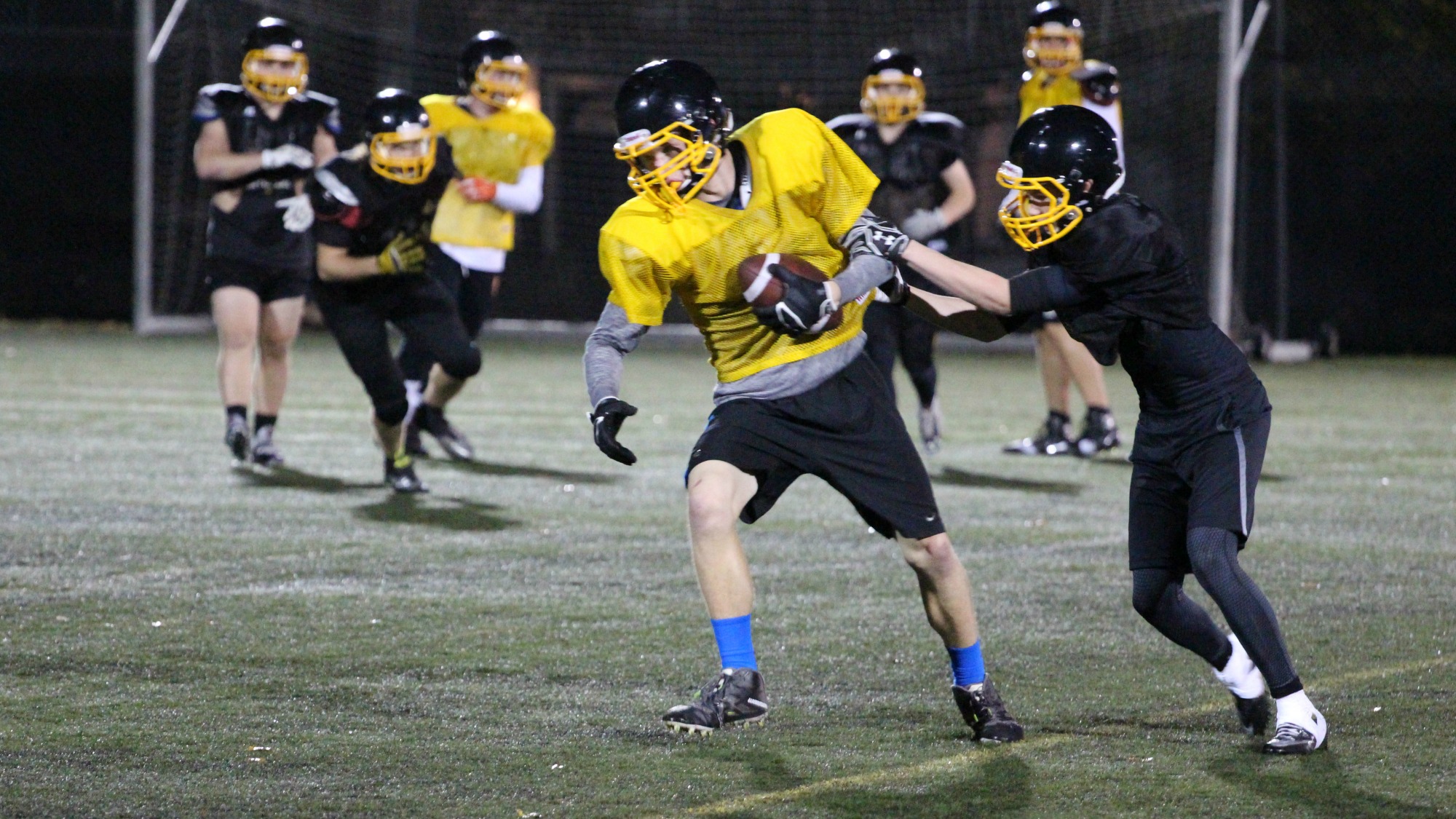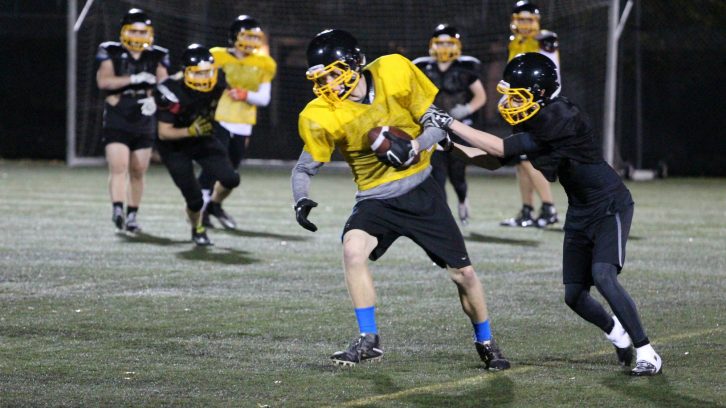Football
The rise of the Atlantic Football League
More graduates beginning to catch the eye of Atlantic University Sport schools

caption
Members of the Atlantic Football League's Dalhousie Tigers practice at Wickwire Field. The 2016 edition of the team features players from Nova Scotia, New Brunswick, Ontario, Manitoba and The Bahamas
caption
Members of the Atlantic Football League’s Dalhousie Tigers practise at Wickwire Field.The Atlantic Football League (AFL) has come a long way in a short amount of time.
Founded in 2009 by the University of New Brunswick, it was designed as a junior football league for players in the Maritimes aged 18-24 who wanted to continue playing but weren’t making the jump to play in Canadian Interuniversity Sport (CIS).
In 2010, Dalhousie University and Holland College were added to the mix, while UNB Moncton eventually folded in 2011.
“If you look down the AUS (Atlantic University Sport) rosters, the vast majority of those players are from outside Atlantic Canada to stay competitive with the rest of the nation,” said former league commissioner Terry Allen.
“These teams (in the AFL) were more meant to be community-based, so that kids coming out of the high school areas had a place to go after they finished high school football.”
Now in its eighth year of operation, the AFL has grown into a hotbed for future CIS talent.
In the last two years alone, 13 former players have been recruited to play university football in the AUS conference. That’s nearly double the number of athletes that received CIS offers in the six years prior.
With an increasing number of CIS players coming from the AFL, the league has slowly started to broaden its own recruitment base.
Over the past few seasons, players from Ontario, British Columbia and Alberta have arrived. The league has also seen a fair share of athletes join up from outside of Canada, from locations such as the United States, the Bahamas and Nigeria.
Shelton Williams grew up in the Bahamas and was recruited to play for Holland College for the 2014 season. After just one year, his talent was noticed by Acadia, who signed him for the 2015 campaign.
Williams believes that the increased recognition of the league has also encouraged more players to buy in, thus increasing the level of competitiveness as well as the belief that playing CIS football could become a realistic option.
“Because of the players that have already been recruited, like myself and others before me, other students are noticing that the AFL is another place that they can go if they can’t make it to the CIS out of high school,” Williams said.
“Kids that are getting recognized but they aren’t getting offers or high interest out of high school, they are seeing the AFL as a second chance. More students are going to the AFL and it’s getting more competitive.”
For Jim Mullin, a member of Football Canada’s board of directors and a longtime CIS football analyst – the AFL’s ability to help develop players for the next step in their football and academic careers is invaluable.
“In terms of it becoming a league where teams are now starting to recruit out of, shows positive signs,” Mullin said.
“It also allows for kids in that area to play football for a couple of years, maybe mature up, take a few years and get a trade certificate and then decide if they want to move to a local university.”
While the AFL has yet to reach a decade of existence, it’s quickly become clear that the future is bright.

